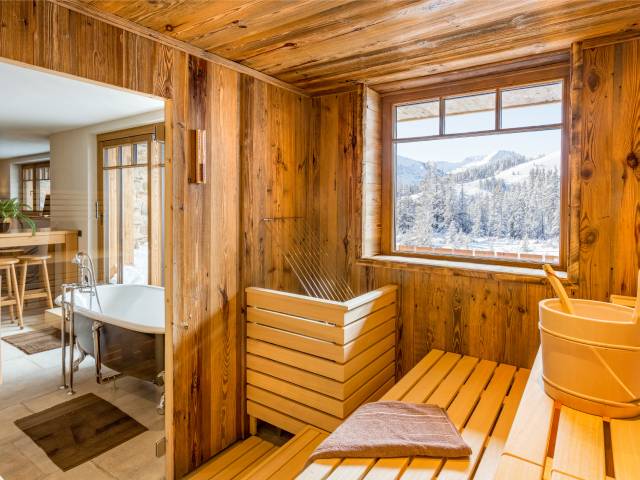
 business
business 
A well-designed sauna provides the perfect escape for relaxation, health benefits, and a sense of luxury in your home. However, crafting or owning an ideal sauna hinges on selecting the right materials.
Your material choices directly affect the ambience and aesthetics while influencing durability, practicality, and the sauna’s health benefits. Here’s a quick guide to the different types of materials used in sauna construction so that you can make informed decisions and elevate your sauna experience.
Wood remains the most commonly used material for saunas thanks to its natural insulation and soothing aesthetic. Woods, such as cedar, hemlock, and pine, are ideal because they resist warping under high heat and maintain an inviting atmosphere.
Classic saunas prioritize materials that don’t overheat or release harmful chemicals, making untreated, quality hardwoods the go-to choice. Beyond functionality, wood’s warm tone creates a serene and welcoming environment for ultimate relaxation.
Cedar stands out as one of the most favored options for sauna construction. It boasts excellent thermal properties, meaning it stays cool to the touch while enduring high heat. Cedar also naturally resists rot and humidity, which are critical factors for a room with constant exposure to steam and moisture.
Another impressive feature of cedar is its soothing, aromatic scent, which enhances the sauna experience for users. This makes for a luxurious atmosphere and can deter pests, ensuring long-lasting performance.
Don’t overlook hemlock if durability is a top concern. Known for its lack of resin and knots, hemlock provides a smooth and uniform finish, perfect for creating a sleek and refined sauna aesthetic.
Hemlock is also hypoallergenic, which is a great alternative for those with sensitivities to aromatic woods like cedar. Although slightly less resistant to rot than cedar, hemlock is a durable choice that works well in various sauna designs, from traditional to modern styles.
For homeowners seeking a cost-effective solution, pine is the material to consider. While it’s more affordable compared to cedar or hemlock, pine still offers the necessary heat insulation required for sauna conditions.
Pinewood emanates a natural charm with its lighter tones and rich grain, creating a welcoming ambience. However, pine is softer than other types of wood, which can make it prone to wear over time. With regular maintenance and proper care, it remains a viable and attractive option for budget-conscious sauna owners.
Owning a sauna isn’t just about choosing the right materials—it’s also vital to maintain it well. Regular cleaning keeps your sauna hygienic, while properly controlling humidity and temperature ensures safety and longevity.
Additionally, inspecting your materials periodically avoids wear and tear that can affect insulation or comfort. Whether you’re installing a new sauna or managing an existing one, thorough understanding and maintenance of your chosen materials will make a big difference in your sauna’s longevity.
Selecting the right materials for your sauna can transform it into a soothing oasis—one that meets your aesthetic and functional expectations. Whether you prefer the timeless warmth of cedar, the durability of hemlock, or the affordability of pine, each option contributes uniquely to the sauna experience.
24World Media does not take any responsibility of the information you see on this page. The content this page contains is from independent third-party content provider. If you have any concerns regarding the content, please free to write us here: contact@24worldmedia.com